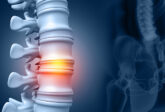How Exercise Can Help With Chronic Pain: A Holistic Perspective

Exercise may be the answer you've been looking for!
Chronic pain is any pain that lasts for longer than a few months. Sometimes it’s triggered by an injury or event; other times, the pain is associated with lifestyle factors, such as backache due to poor posture, or a health condition such as arthritis, fibromyalgia, or even depression.
Regardless of the cause, prognosis, or intensity of your pain, long-term physical pain is enormously upsetting — and, unfortunately, difficult to fully heal in some instances. However, there is hope! One proven way to both manage chronic pain and improve overall wellbeing is exercise.
The Biggest Obstacle to Exercising When You Are in Pain
Undoubtedly, what puts us off exercising when we are in pain is the fact we are, well, in pain.
Pain can limit our physical abilities, so participating in anything that is physically demanding feels counterintuitive. On top of this, for many years, the advice dispensed by health professionals was to rest up and avoid excessive physical movements. However, recent research has shown that exercising is actually therapeutic for chronic pain as it reduces the experience of pain.
Benefits of Exercise
Taking a holistic perspective on exercising for wellbeing is incredibly important for chronic pain, because we know that pain is more than just physical discomfort. It impacts everything from sleep to our ability to work and can trigger depression.
Exercise has a huge physiological knock-on effect that can positively impact many areas of our life, exercise can:
- Improve sleep quality
- Help with stress management
- Boost cognitive function
- Improve mood and mental wellbeing
- Improve cardiovascular health
It is not fully understood why exercise decreases our overall experience of pain. However, one theory is that exercise may increase our endocannabinoids, which reduces pain sensations.
What Does an Exercise Routine with Chronic Pain Involve?
Unlike other people who exercise to improve skill, strength, or stamina, when you have chronic pain, your exercise intention is to reduce the pain but, above all, to improve your wellbeing.
There are four things to think about:
- Mode: there are different benefits to cardio, strength training, and stretching. Cardio helps improve mood and heart health; strength training increases your muscle mass and reduces pain; stretching improves overall mobility, flexibility, and reduces pain. Combining all of these is also a good approach, for example, yoga or going to the gym twice a week, and going for a walk four-five times per week.
- Frequency: Aim to exercise little but often, such as 10-15 minutes every day.
- Duration: Pushing yourself to exercise for 40 minutes may be too much to begin with and lead to increased fatigue and pain.
- Intensity: If you experience chronic pain, it is important to start gentle and increase your frequency and duration before you up the intensity.
Undoubtedly, the biggest barrier to improving your pain and wellbeing through exercise is exercising in ways that don’t support your health. Your mantra is slow and steady. Start by setting achievable goals and slowly build from there. You may hope to be able to go for a twenty-minute jog, but start with a 10-minute brisk walk a few times a week.
How Can A PT Help With Chronic Pain?
A physiotherapist can be a great support as you develop an exercise routine when you have chronic pain. Your PT can help determine the causes or aggravating factors of your pain, such as any physical imbalances or weaknesses, and can guide you in the right direction for the best ways to exercise.
Your PT can also help with accountability. One of the biggest blocks to exercising is the motivation to show up. Your PT will check in regularly on your progress, make recommendations, and be your cheerleader!
If you have ongoing pain and are looking for relief, contact SOPTRI today so we can connect you with one of our experienced PTs.
–
Author: Sylvie Le, DPT, PYTC




